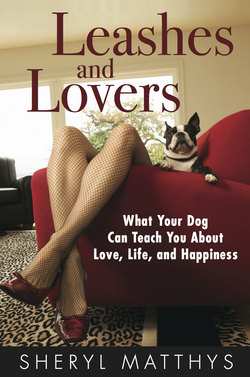Читать книгу Leashes and Lovers - What Your Dog Can Teach You About Love, Life, and Happiness - Sheryl Matthys - Страница 3
На сайте Литреса книга снята с продажи.
ОглавлениеFOREWORD
By Bruce Little, DVM
As a typical youth in pre-World War II rural America, I was aware that the value placed on dogs was based on the work that each could perform. Sheep and cattle dogs helped protect the flocks and herds. Barn dogs protected the chickens and baby animals from foxes and coyotes, and yard dogs served as security to prevent skunks, rodents and other varmints from setting up housekeeping under the farmhouse porch. These dogs were basically outside dogs that seldom had the opportunity to gain admittance to the warm and cozy confides of the family home, except on occasions of extremely harsh winter weather or the stifling heat of the dog-days of summer. These are the dogs that I knew as a child and young adult in rural America.
Fortunately, the fate of the dog has changed appreciably from those humble surroundings of my childhood. The accelerated rate of the post-World War II urbanization of America has changed the purpose of the dog and has moved them inside the home as trusted companions of family members. Many dogs now even sleep with members of the family. As a practicing veterinarian in the 60s and 70s, I began to see and follow the value being placed on the family dog by all members of society. Sight and hearing dogs were the norm, as were police and military dogs that served a purpose beyond just being a best friend. I had clients in my veterinary practice who realized the value in their dog’s presence from warnings of oncoming thunderstorms to the unconditional love displayed by the family dog as a companion to a young recipient in a much deserved “time-out.” The dog’s love and attention never wavered. Dogs have been trained to pick up toys and place them on a tray for physically or mentally challenged toddlers, and dogs have been used to train prisoners and juvenile delinquents about the need for love and nurturing. In many of these scenarios the answer was found in the relationship formed between the family member and the dog.
In 1981, Dr. Leo K. Bustad, then dean of the Washington State University College of Veterinary Medicine, first coined the term “human-animal bond.” Dr. Bustad, who had many honors bestowed upon him for his work and writings on the “bond,” served as chair of the newly chartered not-for-profit organization, The Delta Society. That international group focused on work to understand the quality of the relationship between pet owners, pets, and pet caregivers. The Delta Society, whose mission is to improve human health through service and therapy animals, later teamed up with the American Veterinary Medical Association (AVMA), the largest and most influential veterinary support group in the world, to nurture the term “human-animal bond.” Every year, together they recognize a distinguished member of the veterinary profession for pioneering work in the human-animal bond field.
Both human and veterinary medicine continue to discover the power of animals to influence the detection and healing powers of a strong human-animal bond. Thousands of articles and books from the perspective of pediatric medicine to writings for the aged have been written relating the benefit of a strong human-animal bond in lowering blood pressure, lowering cholesterol, weight loss regimens, easing depression or healing minds from loneliness and emotional isolation, and detection of seizures and various types of cancer.
Now, Sheryl Matthys has written this most insightful and inspiring book on how relationships with dogs can influence and guide our relationships with other people. Ms. Matthys captures many of the benefits of depending on your dog, or that of your potential relationship partner and their dog, to guide you in important decision-making within that relationship. Dogs teach us unconditional love and affection and that love never wavers. Leashes and Lovers is truly a magic potion for understanding our relationships with lovers and those we love. Many of these encumbrances have been with us for most of our lives and have prohibited us from developing meaningful and lasting relationships, or renewing those relationships as needed.
Yes, change has and is happening every day. As the technology revolution continues on its course in every aspect of life, the need for interpersonal relationships will be ever increasing. Look to Sheryl Matthys’ book, Leashes and Lovers: What Your Dog Can Teach You About Love, Life, and Happiness, to direct you in those important decisions. And let your dog be your guide!
Dr. Bruce W. Little is a veterinarian who has not only witnessed this great change in the understanding and evolution of our best friend – the dog, but has played an important role in implementing that change. After graduating from the Kansas State University College of Veterinary Medicine in 1965, Dr. Little spent 21 years in clinical veterinary practice tending to the needs of dogs and all species of animals. At mid-career, Dr. Little felt a need to make greater and more meaningful contributions and accepted a position on the staff of the American Veterinary Medical Association (AVMA) where he served 11 years as the Assistant Executive Vice President and 12 years as the Executive Vice President and CEO of that 78,000 member organization. Among his accomplishments are the creation of the AVMA and Delta Society’s Human Animal Bond Award and the newly created AVMA Animal Welfare Division. Although retired, Dr. Little continues to serve the animals he so dearly loves on boards and committees involving animal related issues.
